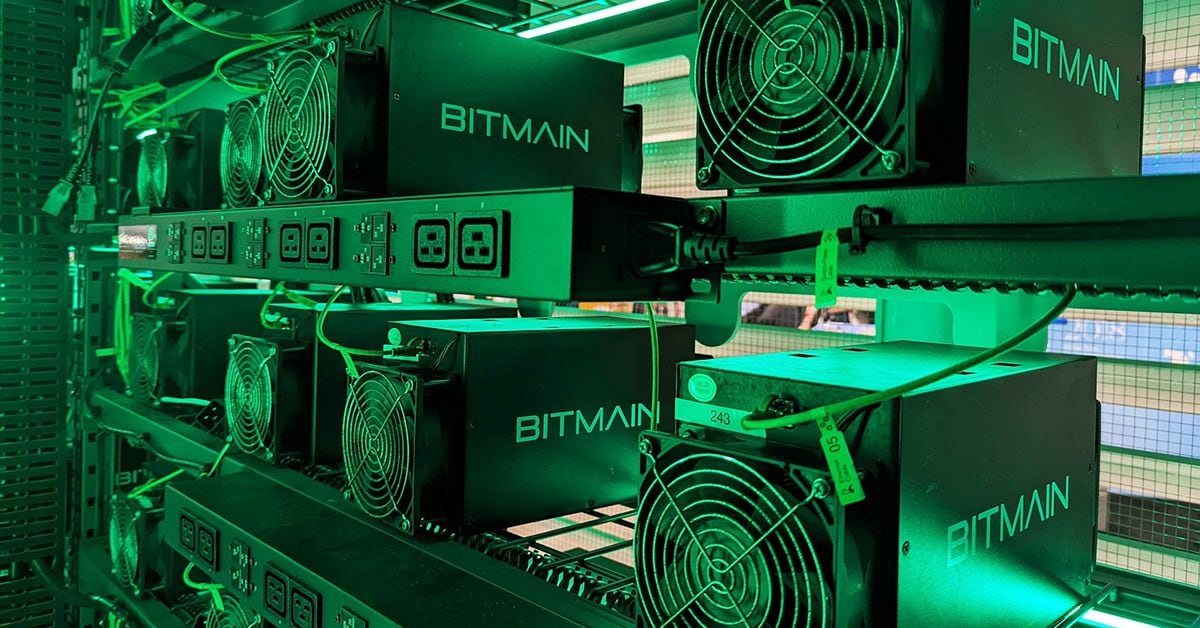Bitcoin (BTC) Miners’ Share of Global Hashrate Hit New High of 26% in August, JPMorgan Says
CoinDesk, an award-winning media outlet covering the cryptocurrency industry, recently updated its privacy policy and terms of use. In November 2023, CoinDesk was acquired by the Bullish group, which also owns a regulated digital assets exchange called Bullish. The Bullish group is majority-owned by Block.one and has interests in various blockchain and digital asset businesses. CoinDesk operates independently with an editorial committee to protect journalistic integrity. Employees, including journalists, may receive options in the Bullish group as part of their compensation. The acquisition has not affected CoinDesk’s editorial policies, which remain strict.
Bitcoin (BTC) Miners’ Share of Global Hashrate Hit New High of 26% in August, JPMorgan Says
In a recent report from JPMorgan Chase, it was revealed that Bitcoin miners’ share of the global hashrate hit a new high of 26% in August. This is a significant increase from previous months and highlights the growing power that miners have in the cryptocurrency ecosystem.
The report noted that Bitcoin miners’ share of the global hashrate has been steadily increasing over the past few years, as more miners enter the market and competition for block rewards intensifies. This has led to a concentration of mining power in the hands of a few large mining pools, which has raised concerns about centralization within the Bitcoin network.
Despite these concerns, the report stated that the increase in miners’ share of the global hashrate is actually a positive development for the long-term sustainability of the Bitcoin network. This is because it indicates that miners are becoming more invested in the network and are willing to commit resources to securing the blockchain.
The report also highlighted the role that institutional investors are playing in the Bitcoin mining industry. These investors are increasingly getting involved in mining operations, either by setting up their own mining facilities or by investing in existing mining pools. This has led to a further concentration of mining power in the hands of a few large players, but it has also brought much-needed capital and expertise to the industry.
One of the key factors driving the increase in miners’ share of the global hashrate is the recent bull run in the cryptocurrency market. Bitcoin’s price has been on a tear in recent months, reaching new all-time highs and attracting a flood of new investors to the market. This has increased the demand for mining hardware and has led to a surge in mining activity.
Another factor contributing to the rise in miners’ share of the global hashrate is the upcoming Bitcoin halving event, which is scheduled to take place in May 2020. The halving will reduce the block reward that miners receive for validating transactions on the Bitcoin network, which could lead to a drop in mining profitability. Miners are therefore ramping up their operations now in order to maximize their profits before the halving takes place.
Despite the increase in miners’ share of the global hashrate, the report noted that there are still risks to the long-term sustainability of the Bitcoin network. One of the biggest concerns is the potential for a “51% attack,” in which a single entity controls more than half of the network’s mining power and is able to manipulate the blockchain for their own gain. While this scenario is unlikely, it remains a theoretical possibility and is something that the Bitcoin community is constantly monitoring and working to prevent.
Overall, the report from JPMorgan Chase paints a positive picture of the current state of the Bitcoin mining industry. The increase in miners’ share of the global hashrate is seen as a sign of the growing maturity and stability of the network, and the involvement of institutional investors is seen as a positive development that will help to support the long-term growth of the industry.
As Bitcoin continues to gain mainstream acceptance and adoption, it is likely that the role of miners in the cryptocurrency ecosystem will only grow in importance. The increasing concentration of mining power in the hands of a few large players is a trend that is likely to continue, but as long as the network remains secure and decentralized, this should not pose a significant threat to the overall health of the Bitcoin ecosystem.
In conclusion, the report from JPMorgan Chase provides a detailed analysis of the current state of the Bitcoin mining industry and highlights the growing influence that miners have in the cryptocurrency ecosystem. While there are risks and challenges ahead, the overall outlook for Bitcoin mining remains positive, and miners are likely to play a key role in shaping the future of the cryptocurrency market.
I don’t own the rights to this content & no infringement intended, CREDIT: The Original Source: www.coindesk.com

